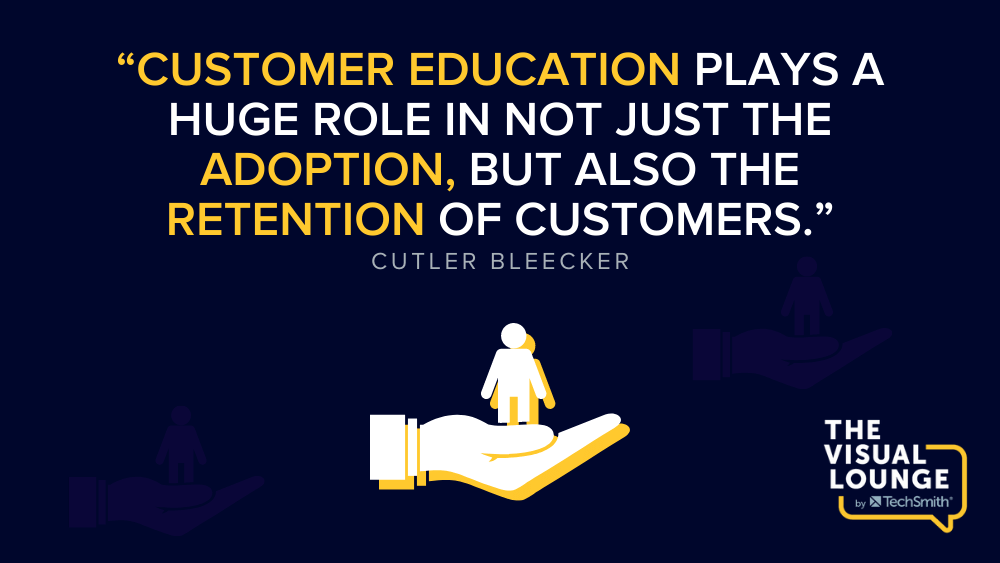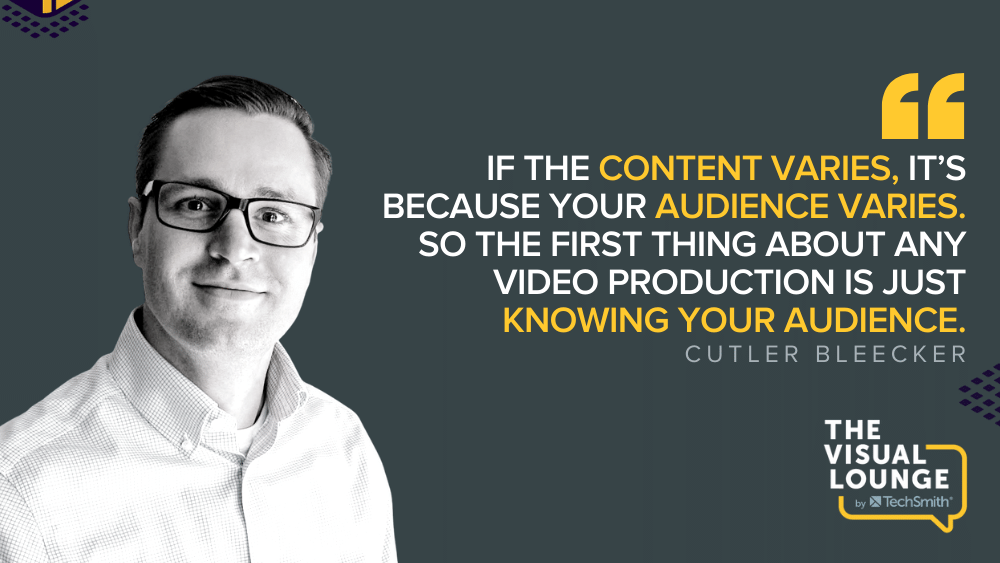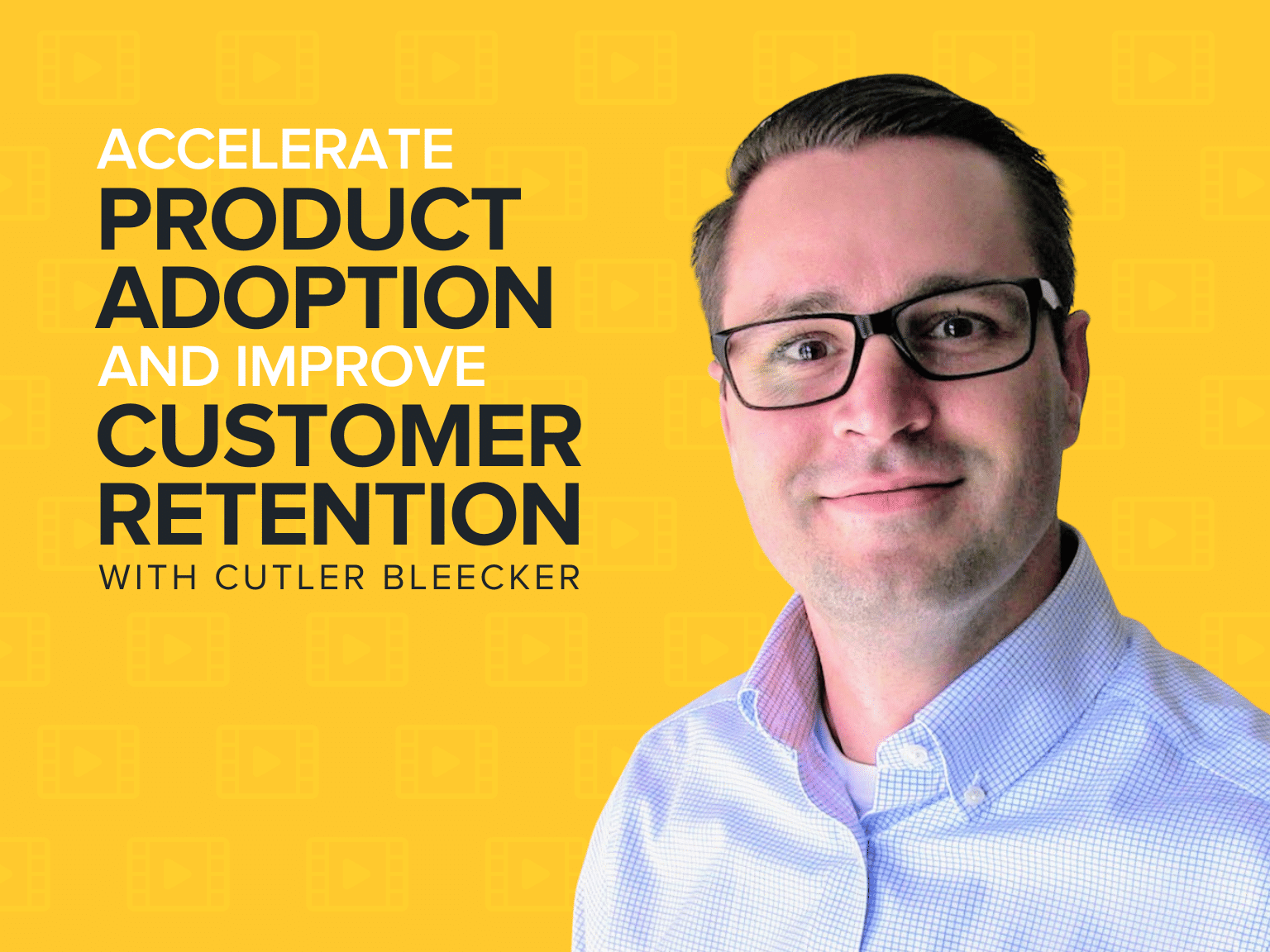Did you know that customer education can help to boost both customer adoption and retention?
Education is often an overlooked part of the customer experience, but companies that prioritize it see great results.
In this episode of The Visual Lounge, Cutler Bleecker, Learning Experience Designer at Skilljar, joins to share his expertise on customer education and creating great training content.
Cutler has a passion for both teaching and technology, with an undergraduate degree in education as well as a Master’s in Instructional Technology. As a former high school Business and Technology teacher, Cutler has taught everything from accounting and computers to graphic design and video production.
He transitioned into educational technology as a product expert, then a content creator for Classworks before moving to Skilljar.
This episode is packed full of advice on creating educational content and what you need to know before you get started. We hear about Cutler’s successes, the challenges he’s faced when creating content, and his best advice for others.
To listen to the podcast episode, hit play below, or read on for more…
Defining customer education
Customer education, at first glance, seems an obvious thing to define. Surely it’s just learning, right? But Cutler likes to view it slightly differently.
Rather than just being about learning, customer education should equip the audience with the skills and tools to take action. Just because you learn something doesn’t mean you know how to apply it, and that’s where Cutler’s work bridges the gap.
“With customer education, I want to not just show you how to do something. I want to give you the opportunities and the tools you need to be able to do this on your own.”
The value for businesses that’s hard to ignore
Offering helpful content provides a clear value to customers looking for answers, but what about the business itself? Customer education goes beyond just having happier customers. It can also improve customer adoption and retention.
Solid educational content can help in the sales process because people are getting value before they’ve even signed up. Once they’ve been a customer for a while, your content can also keep them on board.
In this case, customer education should be a focal point for anyone trying to protect their profits. It’s not just a nice-to-have, it’s a must-have.
“Customer education plays a huge role in not just the adoption, but also the retention of customers.”
Remember, customer retention is often more cost-effective than customer acquisition. So, if you’ve been looking for a way to improve retention, try looking at your educational content.

Deciding on a format
Lots of different factors play in the decision to make a video versus a graphic. But Cutler says that the main one is time.
A quick placeholder graphic, screen-sharing video, or text instructions will do if you don’t have much time. If it’s for internal content for the team, there’s even less pressure to create perfect and polished content.
With more time, polished videos and graphics definitely have their place.
However, the key thing that Cutler wants us to focus on is our ultimate goal. Did the content make it to your audience? If it doesn’t land well, the good thing is you can always change it up, improve, and test out different formats until it hits your goal.
Video tips for newbies
If you’re now fully convinced that creating educational videos is the way to go but have no experience, where do you start?
Cutler has some simple advice – just use what you have and improve where you can.
“If anyone, me included, goes back and look at some stuff I did six months ago, a year ago, I’m going to cringe at like, oh man, I’m still using that, or I had that lighting. It’s an iterative process, and you just improve the little things where you can.”
One thing that he’s learned from TechSmith’s videos is to make sure your audio is good because that can make all the difference. Other than that, experiment with the resources you have, practice, and your videos will definitely improve.
Keeping your videos engaging
According to recent TechSmith research, one of the top reasons people stop watching videos is because they get bored, or the content wasn’t interesting. That accounts for 16% of people who stopped watching a video.
No one likes to hear that their videos are boring, of course, but there are some things you can do to make them more engaging. But first, try not to take it personally.
“It’s not that you’re boring. It’s maybe this content just wasn’t the right fit for that person. So being able to provide content in more than one format can sometimes help.”
Experimenting with different formats can help because not everything needs to be a 30-minute video. Sometimes it only needs to be an infographic or a blog post.
If you’re scratching your head, wondering why no one’s watching your videos, ask for feedback to get to the bottom of it. Another thing you can do is mix up your videos, so you’re not just sitting there for 20 minutes talking to a camera. Try to add more excitement into your voice, talk to subject matter experts, and try scripting versus not scripting. You could also add an element of interactivity with polls, for example.

The importance of accessibility
One of the challenges in creating educational content is ensuring that it’s accessible for everyone. Creating content in different formats is helpful because it reaches more people in different places, but it’s also important for another reason.
Not everyone learns in the same way. Some people are hard of hearing or visually impaired, so certain mediums are either not suitable or need to be adapted. For example, you could include a transcript for videos or subtitles.
“I’d say accessibility is probably a good place to start. And you don’t have to be an expert in it. Maybe you start by providing transcripts of your videos, as you’re publishing them to different places. So that way, at least that option is there for those that need it.”
For more advice like this on video creation, learning design, and customer education, you can find tons of resources in TechSmith Academy. Alternatively, to hear all of Cutler’s tips, scroll to the top and watch/listen to the full episode.



Share